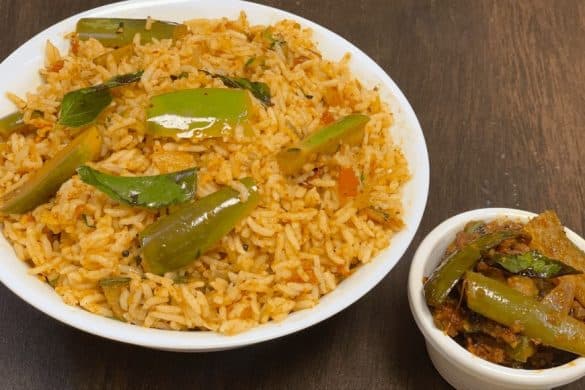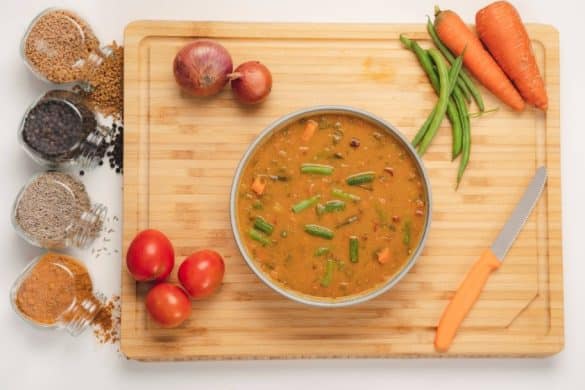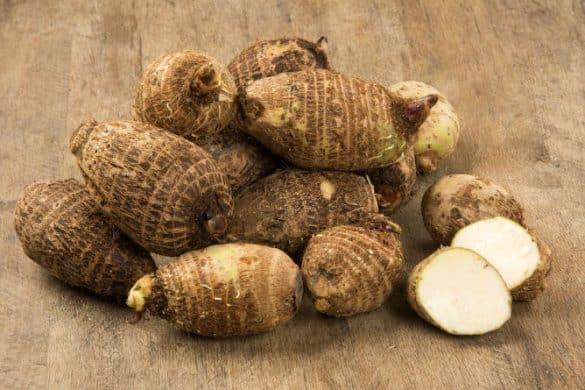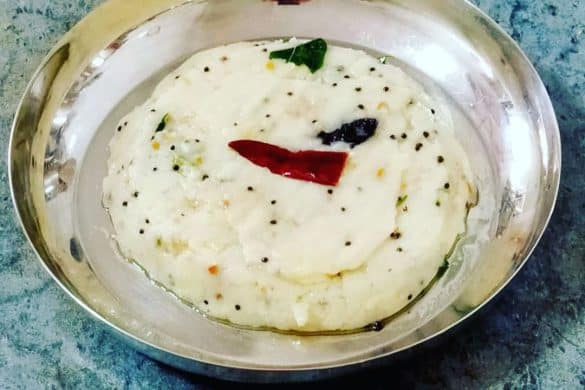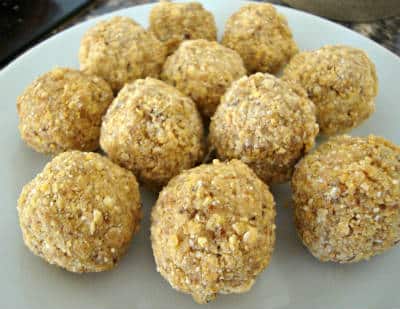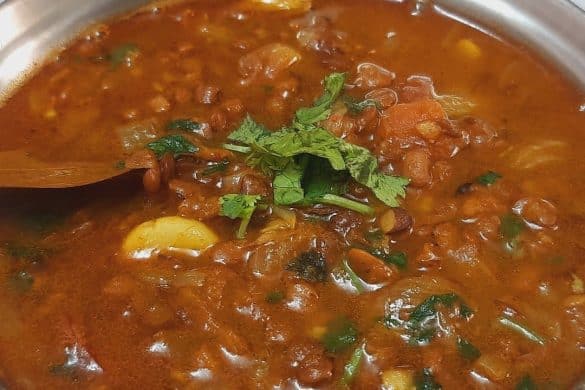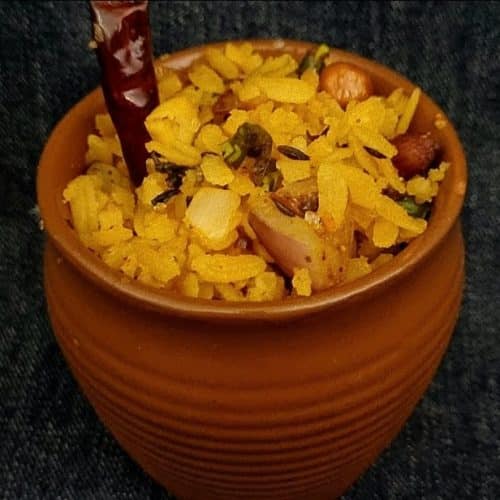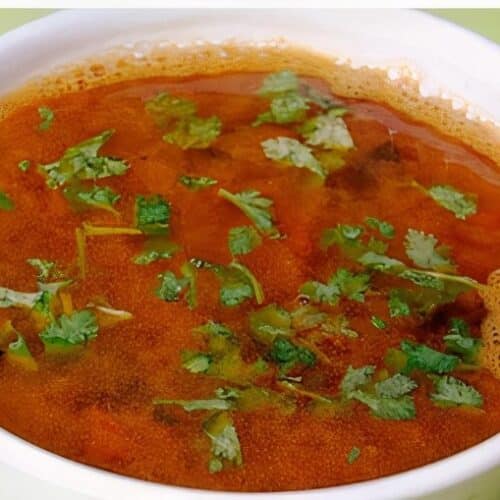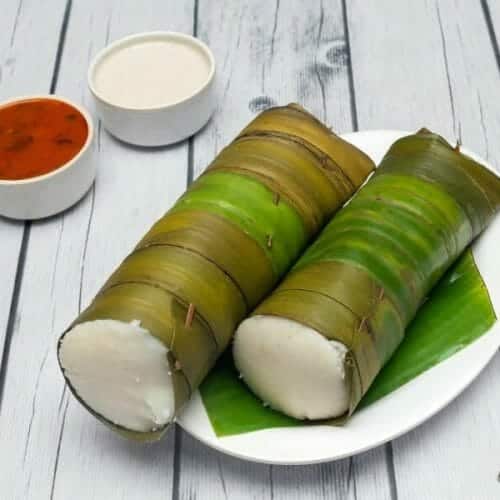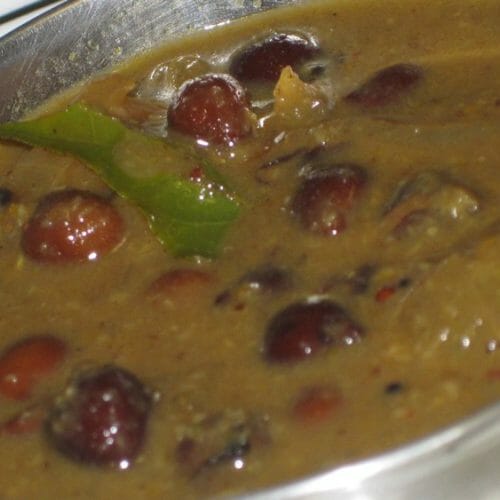Palappam is a traditional South Indian dish that’s visually appealing and delicious. With its lacy, crispy edges and soft, fluffy centre, It makes for a delightful breakfast or brunch option. These bowl-shaped pancakes are made from rice flour and coconut milk and are perfect when paired with various savoury curries.
About the Recipe
This Palappam recipe stands out for its simplicity and authentic flavour. You can create a batter that transforms into delicate, lacy pancakes by combining rice flour, coconut milk, and a touch of yeast. The key is allowing the batter to ferment, resulting in a light and airy texture. Enjoy these appams with vegetable stew, chicken curry, or spicy fish curry. This recipe includes tips on achieving the perfect consistency and cooking technique, ensuring your Palappam turns out beautifully every time.
Why You Will Love This Recipe
You’ll love this Palappam recipe for its unique combination of crispy and fluffy textures, making each bite a delightful experience. The subtle sweetness from the coconut milk complements the savoury dishes it accompanies. The fermentation process gives the batter a slight tang, enhancing the overall flavour. It’s a versatile recipe that can be customized with various toppings and sides, adding a new favourite to your breakfast list.
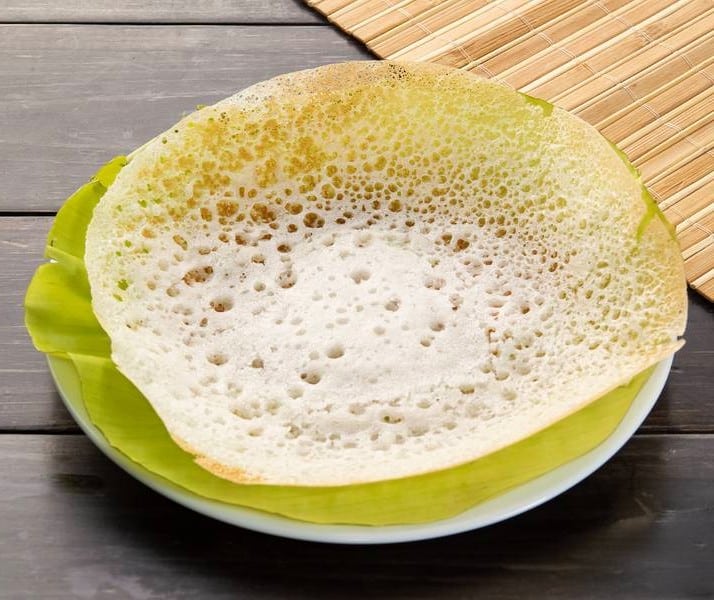
Palappam
Cooking Tips
For the best Palappam, ensure your batter is the right consistency—neither too thick nor too runny. Use warm water to dissolve the yeast and let it rise properly. Swirl the batter quickly to create the signature lace pattern, and cover the pan to cook through without flipping.
Cultural Context
Palappam originates from Kerala, a state in southern India known for its rich culinary heritage. Traditionally served during special occasions and festivals, it reflects the region’s love for rice and coconut-based dishes. Its unique texture and flavour make it a cherished part of Kerala’s breakfast spread.
Serving and Storing Suggestions
Palappam is best enjoyed fresh and hot, straight off the pan. Serve with coconut milk, vegetable stew, or any curry you choose. If you have leftovers, store them in an airtight container in the refrigerator for up to two days. Reheat in a lightly oiled pan before serving.
Other Similar Recipes
- Dosa: Another South Indian favourite, these thin, crispy pancakes are made from fermented rice and lentil batter.
- Idli: Soft, fluffy steamed cakes made from fermented rice and urad dal.
- Puttu: Steamed cylinders of ground rice layered with coconut, often served with curry or bananas.
Nutrient Benefits
Palappam offers a good source of carbohydrates from rice flour, providing energy to kickstart your day. Coconut milk adds a dose of healthy fats, essential for brain function and energy. Fermentation can also aid digestion, making this a nutritious breakfast option.

Palappam
Ingredients
- 2 1/2 tbsp Sugar
- 1 tsp Yeas
- 1/2 cup Warm Water
- 1/2 cup Semolina
- 2 cups Water
- 1/4 kg Rice Flour (roasted and sifted)
- 2 cups Coconut Milk: 2 cups
- Salt (To taste)
- Gingelly Oil (For greasing)
Instructions
- Dissolve 1 tsp sugar and yeast in 1/2 cup warm water. Let it sit for 20 minutes until it rises.
- Cook 1/2 cup semolina with 1 1/2 cups water to make a thick paste. Cool it.
- Mix the cooled semolina paste with rice flour.
- Knead the mixture into a soft dough.
- Add the yeast mixture to the dough and knead well.
- Cover and let the dough rise for 12 hours.
- Once risen, mix in coconut milk, remaining sugar, and salt to make a smooth batter.
- Lightly grease the appam vessel with gingelly oil and heat it.
- Pour a ladleful of batter into the boat, lift off the flame, and swirl once to spread.
- Return to the flame, cover, and cook for 1-2 minutes until the edges are crispy and the centre is cooked.
- Repeat with the remaining batter.
Sign up for our newsletter
Frequently Asked Questions:
How do I ensure my Palappam batter ferments properly?
Palappam batter ferments best in a warm environment. To avoid killing the yeast, ensure the water you use to dissolve it is just warm, not hot. Let the batter sit covered in a warm spot in your kitchen for 12 hours. You can also preheat your oven to the lowest setting, turn it off, and place the batter inside with the oven light on to help with fermentation.
Can I use instant yeast instead of active dry yeast for Palappam?
Yes, you can use instant yeast instead of active dry yeast. Instant yeast doesn’t require proofing and can be mixed directly into the dry ingredients. However, to maintain the traditional method and ensure proper fermentation, it’s best to dissolve it in warm water and sugar, as the recipe suggests.
What can I serve with Palappam?
Palappam pairs wonderfully with a variety of curries. Try it with vegetable stew, chicken curry, or fish molee. For a more straightforward option, serve it with sweetened coconut milk or a chutney. The mild flavour of Palappam complements both savoury and sweet accompaniments, making it versatile for any meal.
Can I prepare Palappam batter ahead of time?
You can prepare Palappam batter and store it in the refrigerator after fermentation. It will keep for up to two days. When ready to use, let the batter come to room temperature before cooking to ensure the best texture and consistency.
Is there a gluten-free version of Palappam?
Traditional Palappam is made from rice flour. Ensure the semolina you use is also gluten-free. If you’re highly gluten-sensitive, check all ingredient labels to avoid cross-contamination. Enjoy this naturally gluten-free dish without any modifications.

